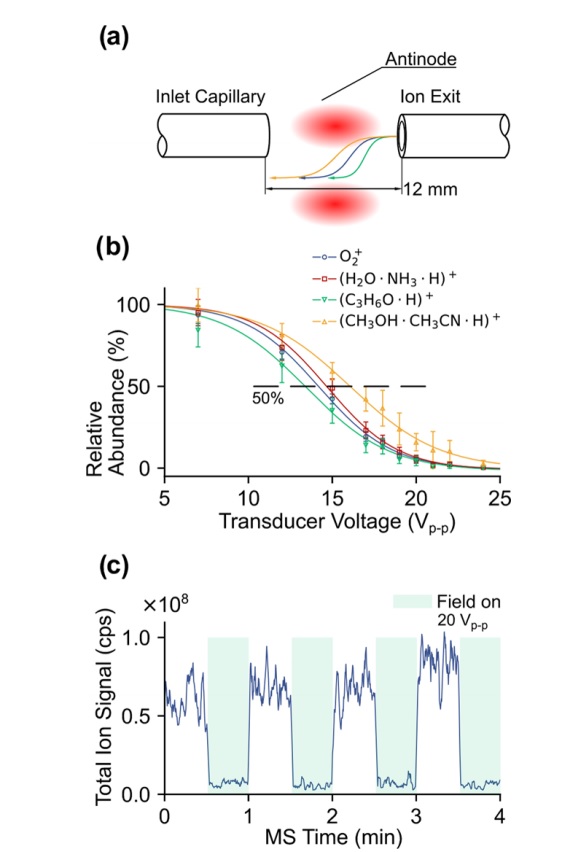Manipulation of Gaseous Ions with Acoustic Fields at Atmospheric Pressure
Posting date on solidfuturism: May 30th 2024
Published date: may 8th 2024
Authors: Yi You, Julia L. Danischewski, Brian T. Molnar, Jens Riedel,* and Jacob T. Shelley
DOI: 10.1021/jacs.4c01224
Abstract composer and editor: Seyed Amirhosein Mirsadri
This article discusses the control and manipulation of motion of ionized particles and molecules. Various techniques use electromagnetic interactions to balance, direct, or deflect these charged species. This ability has led to the development of numerous tools and technologies. Discoveries in methods such as electrophoresis, mass spectrometry, and ion mobility spectrometry have transformed into tools for sample purification and chemical analysis. While the targeted guidance of ions in low-pressure environments is well established, significant efforts have been made to achieve similar performance in atmospheric pressure.

Ultimately, a better method for altering ion behavior in a controlled collision system is the direct use of charge dependence on collisional segments. IMS or Ion Mobility Spectrometry is an analytical research method that separates and identifies ionized molecules present in a gas phase based on their movement in a carrier gas. IMS instruments are highly sensitive and are often combined with other devices like mass spectrometers, gas chromatography, or liquid chromatography for multidimensional performance. These devices operate in various sizes from a few millimeters to several meters under different conditions. This article introduces an innovative method to create a controlled path by generating a stream of ions resulting from ionized molecules. This method allows for selective control over the ion passage route. In this context, the article highlights the influence of acoustic sound, utilizing sonic and ultrasonic speakers. Researchers have found that by inventing this method, they can prevent a group of ions or ion pieces from entering their analysis chamber or selectively allow entry, as well as adjust their entry speed. Furthermore, this method can induce phenomena such as concentration, deflection, direct controlled passage, or pre-analysis separation before entering the mass spectrometry chamber. Atmospheric molecules were used here to test gas with corona discharge and an inert nitrogen gas flow.


klsjuidhfasdgh.png)
klsjuidhfasdgh.png)
klsjuidhfasdgh.png)
klsjuidhfasdgh.png)
klsjuidhfasdgh.png)

klsjuidhfasdgh.png)
klsjuidhfasdgh.png)
klsjuidhfasdgh.png)